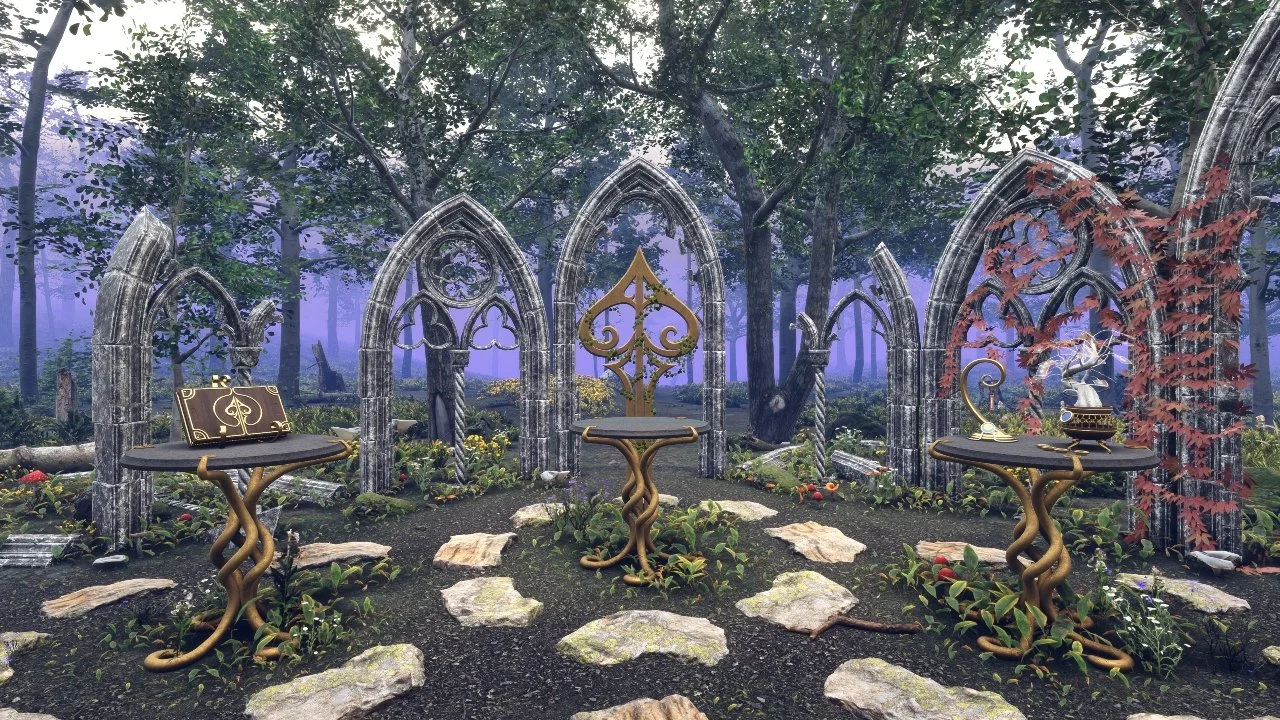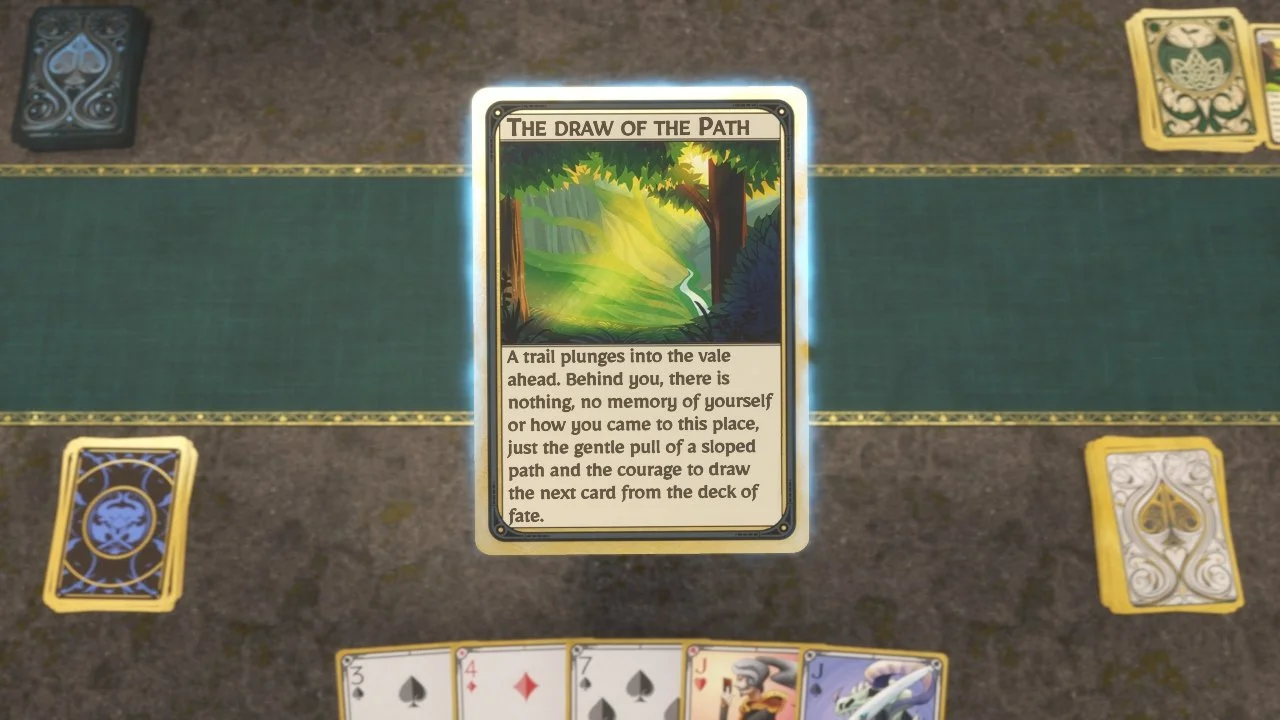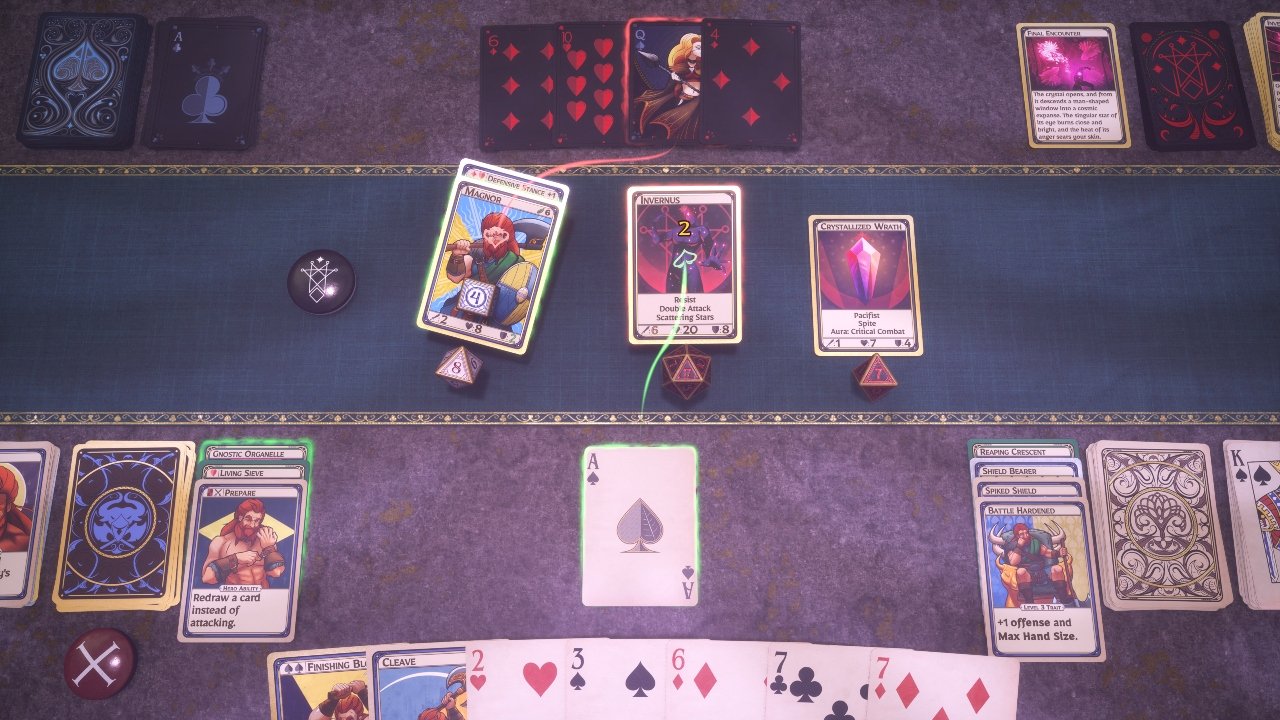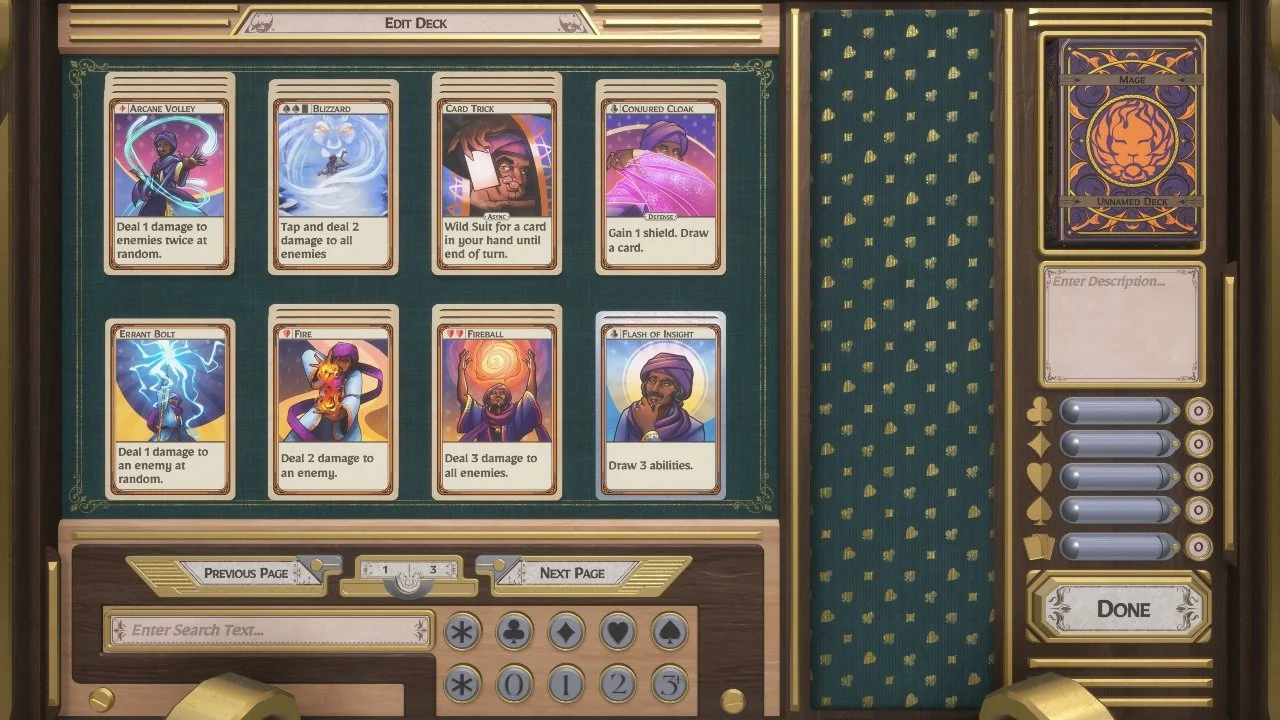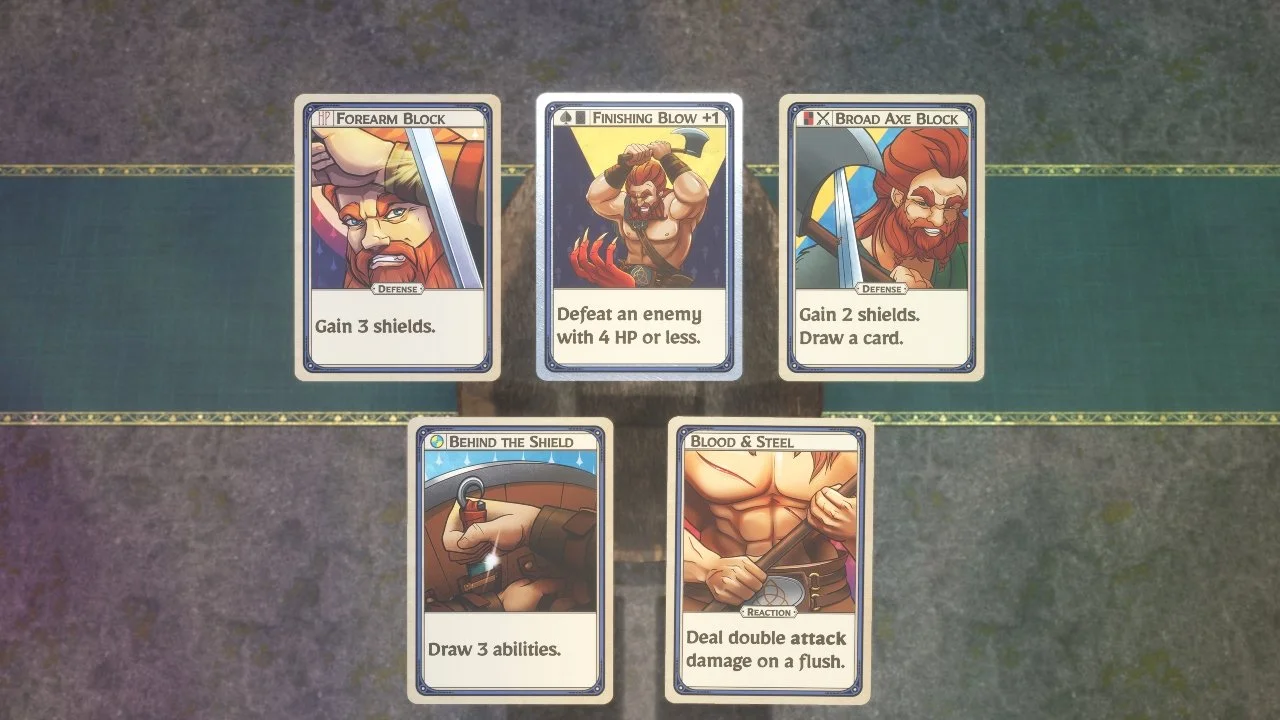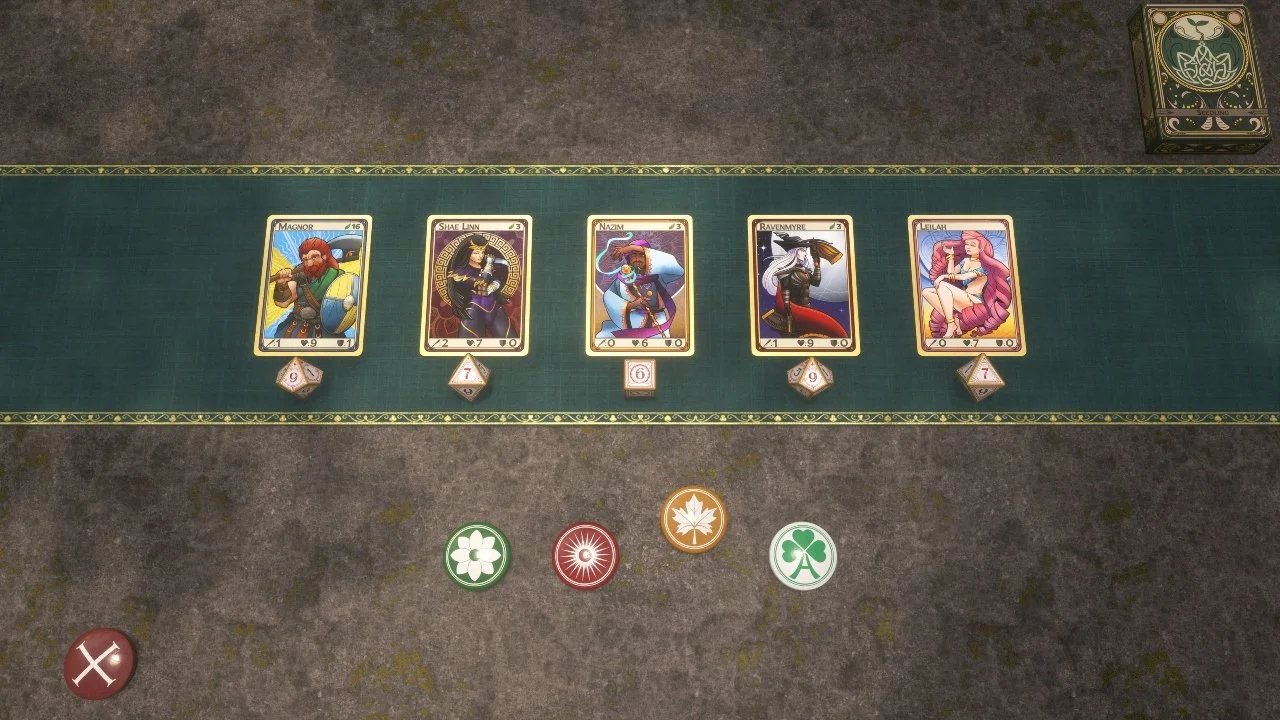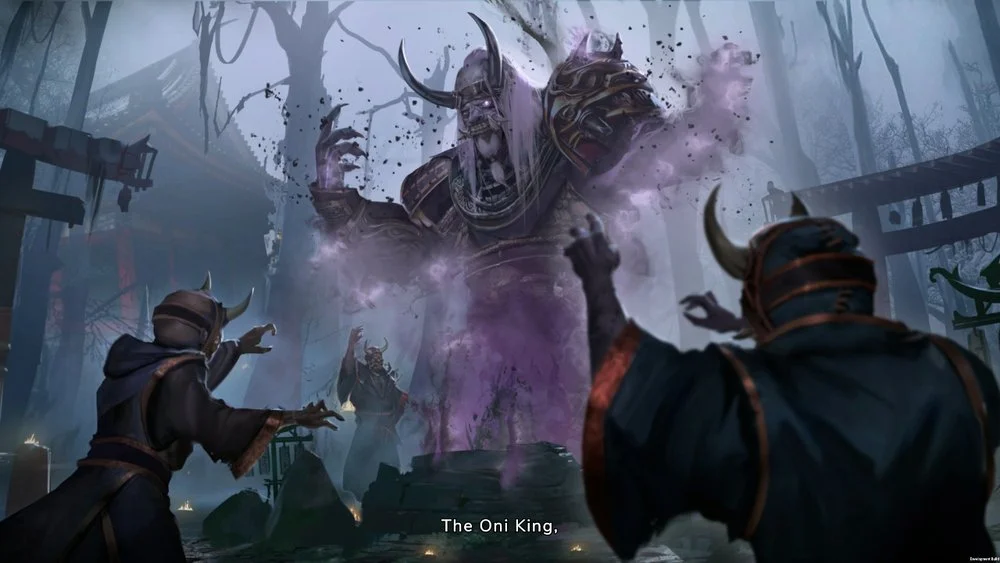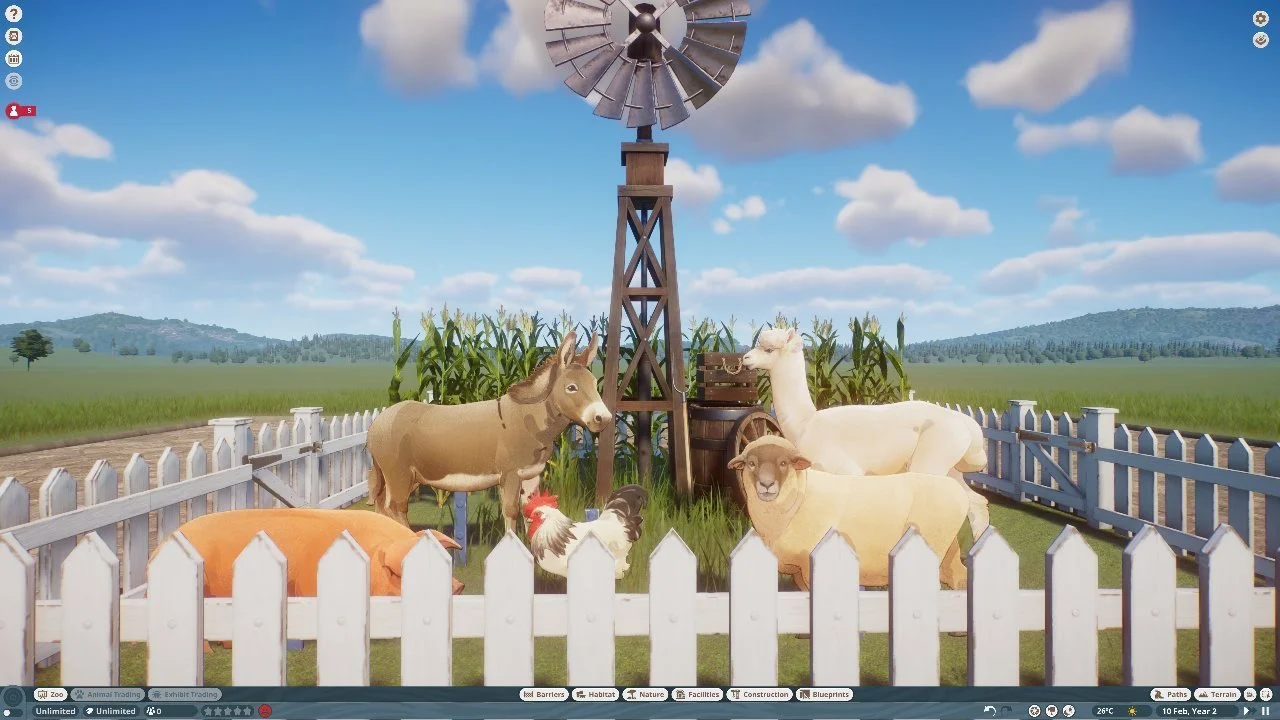PC Review Code Provided by Yogscast Games and Triple.B.Titles
The OG Youtube channel The Yogscast has been running their own indie game production studio for a few years, leading to some incredible games. Speaking of which, Yogscast Games just released indie developer Triple.B.Titles’ deckbuilding/poker fantasy rogue-lite Aces & Adventures a few weeks ago and I was given a chance to review it. I was pumped going into this since I’ve been a fan of the Yogscast for over a decade now; however, as a self-proclaimed rogue-lite and deckbuilding connoisseur, I did have some reservations over how well the poker mixed with deckbuilding system would work. I was then pleasantly surprised over how well the poker hand gameplay meshes with the hero skill and deckbuilding, though it was not without its problems.
For a brief intro to Aces & Adventures, as I stated earlier, it’s a deckbuilding rogue-lite where the deckbuilding is mixed with poker. Aces & Adventures is first and foremost a rogue-lite deckbuilder, but there is a tasty dose of fantasy RPG there as well. You can adventure as one of 5 different characters across 13 story-driven campaigns or limitless procedurally created adventures. You’ll begin and end each run on a magical tabletop in a mysterious grove. As you progress in Aces & Adventures you will carefully craft and specialize multiple decks for each hero based on your playstyle, and unlock powerful new traits, skills, and abilities; all while running through an entertaining and oddly plentiful amount of story for an indie deckbuilding rogue-lite, or you can jump into the procedural mode where the journey is never the same.
Story
Unlike most rogue-lites out there, Aces & Adventures actually has not only a story mode but a lot of it. Aces & Adventures story takes place in a world of fantasy inspired by Norse and Arabic mythology. Players will embark on a journey to save Cardrasil the Life Tree, along the way they will be accosted by a large variety of encounters with creatures of myth and fantasy. In the game, players choose which campaign they wish to play and, if previously completed, which chapter they want to play through. Each chapter has different paths and choices players can take that change the enemies, encounters, and rewards they come across on their adventure, and while the journey may vary if you play through multiple times, the end result will remain the same.
The story of Aces & Adventures is told through Story Cards, which players draw from the deck after each encounter; the card will be fully narrated and describe your journey, efforts, and offer decisions for them to take. For players who read fast or don’t want to listen the cards, this can be skipped with a click. The story itself is actually rather entertaining and includes many themes around nature, seasons, elements, growth, death, and life that mesh well with the Norse and Arabic mythology that permeates the game.
Gameplay
As always, the gameplay is what makes or breaks a rogue-lite and Aces & Adventures is no different. When you enter the game you can decide which of the 2 game modes and 5 different ‘games’ you can play, Spring, Summer, Fall, Winter, and War of the Branches. Spring, Summer, Fall, and Winter are the story modes of the campaign each progressing further in difficulty and War of the Branches is the procedurally generated option. If you select a story mode you can then select a ‘chapter’ of the story you’ve previously beaten or the latest chapter you’ve unlocked in your adventure if you haven’t finished the story. Each chapter of a story mode or run through War of the Branches lasts around 20-40 minutes.
Once you select a game mode to play you choose which hero you want to play as from Magnor the Warrior, to Shae Linn the Rogue, to Nazim the Wizard, to Ravenmyre the Huntress, to Leilah the Enchantress. Each hero has their own specialties once in game, generally, Magnor focuses on flat defense or offense, Shae Linn on incremental damage and avoiding attacks, Nazim on versatility and big damage, Ravenmyre on mass attacks or summoning allies, and Leilah on debuffs and buffs. While those are the very generalized focuses of each hero the deckbuilding option gives you massive versatility.
After you pick your hero you can choose what deck you want to play; the player can create decks of up to 30 hero cards in the deck edit screen of the menu. There you can optimize what strategy a deck is going for, for example, I created one Magnor deck that focused on getting as many shields as possible, paying health for card draws and other bonuses, regenerating health, and specializing in Spade poker cards; a different Magnor deck could focus on dealing direct damage with the hero cards and getting bonuses from being on low health and so on.
Every hero has an incredible amount of decks and subspecialties that players can create. A good focus for deckbuilding is to match them to specific builds of hero abilities. Once in-game, players can level their hero up to three times each in a run, on level up a hero has three abilities to choose from that are always the same for that level. At the start of the game, however, each hero has only one ability at each level unlocked and the other two have to be unlocked through leveling up that hero. Take Magnor for example, his first level-one ability lowers damage if he defends with a heart card (we’ll get to that) and his second gives him one shield per turn. So one deck focused on using hearts and turning cards into hearts may choose the first ability, and a deck focused on shielding may choose the second.
Now, let’s get to the actual combat of it all, once a run starts there are four decks on the table in story mode and three in the procedurally generated mode that are used to draw from; the player’s hero card deck, the player’s standard deck of 54 normal poker cards (jokers are wild), the enemies standard poker deck, and the encounter/story deck if you’re in story mode. In story mode, you draw from the encounter/story deck before and after each combat, the story choices you make decide which enemies you face in that run as well as what buffs or debuffs you receive. At the start of a run, players draw 3 cards from the hero deck and 5 poker cards. On the player’s turn, they can use however many hero abilities they want if they can pay their cost in poker cards or resources. Also on their turn a player may attack an enemy once, they do so by playing a poker hand against them to deal damage, an enemy defends this by drawing cards from their deck, and whoever loses takes the damage. The roles then swap on the enemy's turn with them attacking and the player defending. The player draws back to five poker cards before every enemy attack and at the start of their turn. Enemies have defense and offense values that determine how many cards they get to draw while attacking or defending, a boss may draw 8 cards every time they attack, making it that much easier for them to have a good hand. In addition, enemies will have unique inherent abilities rather than hero cards that give them special powers like attacking multiple times or halving the damage they take.
Unlike story mode where the adventure and encounters are drawn from the story deck, in the procedurally generated mode players travel across a randomly generated assortment of paths on a map, planning out which paths to take to get which rewards or what type of encounters to avoid. The encounters themselves in the game mode are pulled randomly based on the difficulty level from any of the encounters in story mode.
After each run players get mana they can use to level up their heroes as well as new cards to add to the pool of cards they use to create their decks. The card rewards are also sometimes better than the base card, taking influence from D&D’s magic items labeling the cards as +1, +2, +3, and so on. Searching for better versions of your favorite cards is what lets you combat the game at the harder difficulty levels.
Audio and Visuals
The narrative and voice acting of Aces & Adventures is excellently done, and the narration of the story is always pleasant to listen to, well delivered, and often accompanied by comedic undertones that land perfectly. Each hero available for the players to use comes with their own voice lines and style. In addition, each enemy and card you play has their own unique audio effects from grunts to customized sound effects. The game’s music is mostly just there in the background to create the mood and has little variance overall.
The visual design of the game is amazingly well done, and exceedingly clear. The 3D grove you begin the game in serves as the games menu screen, clicking on the three different objects in the grove will bring you to either the well-designed deckbuilding menu, the level-up tree, or the game mode selection table. Each card in the game has its own design with a relatively minimalist art style that still remains interesting to look at. The poker cards themselves have two designs to choose from, which can be found in the game options screen after hitting escape. In game, the play area is designed to seem as if you’re playing on the stone table drawing from your deck and the enemies’ deck to play. In the rogue-lite mode, you have a map that you can select your route on that follows a path reminiscent of a tree, tieing into the story and themes of the game. After each run, you can add mana to the level-up tree which will advance a hero of your choice’s progress and their unlocks. The whole menu and world of the game take place in the 3D area, and you play the 2D cards there as if you’re sitting down at a table.
Replayability
The replayability in Aces & Adventures is fairly absurd even for rogue-lites. The sheer number of different possible decks you can create for each hero means there are a ton of different ways to play the game. However, the fact that the decks are premade and already decided upon does take out some of the fun of randomly creating your deck as you play each run based on chance that’s available in similar games. The randomness that’s missing in deckbuilding transfers to what poker cards you will draw. The story for the game is actually highly replayable as there are different paths you can take and enemies to fight. However, as deckbuilding is set in stone before each run, there is theoretically a cap to the number of times you can enjoy playing the game once you unlock everything. Unlike other rogue-likes and rogue-lites, since your build doesn’t randomize each run, there will be given ‘best’ versions of decks you can use that may get tiring after a while. The lack of randomization towards deckbuilding and not having a game mode that randomizes your build mean there isn’t that inherent challenge on on-the-go random deckbuilding that adds replayability to other deckbuilding rogue-lites.
What It Could Have Done Better
While Aces & Adventures is a friggin’ awesome game, there are a few areas that are lacking that could use improvement. The deckbuilding menu is very well designed in terms of clarity and ease of use, but it can get finicky when you’re looking for cards. The scrolling between pages of cards is a little confusing at times as cards seem to get resorted and moved around as you add cards to your deck. In addition, some more options for searching for specific cards would be nice in addition to the suit, number, and specific text options available, for example by what type of effect they have like healing or giving a shield.
The only issue I can think of with the actual gameplay is that sometimes combat will be down to luck of the draw for poker hands rather than skill or planning, but then again it is specifically a deckbuilder mixed with poker, so the chance aspect is inherently part of it.
The last and biggest thing is that as I said before, replayability could be so much higher if there was just another game mode where you build your deck on the procedural adventure or where your deck is randomized because giving the player the ability to make their decks outside the run does add a cap to the replayability.
Verdict
Aces & Adventures is a unique and entertaining take on the indie deckbuilding rogue-lite genre and something that I highly recommend to fans of RPGs, fantasy, rogue-lites, or card games. The accessibility and ease of entry by basing the game around poker makes Aces & Adventures a great way to introduce new players to rogue-lites or deckbuilding games; as well as simply being fun and entertaining for old hats of the genre with its unique spin on mixing classic poker with a rogue-lite adventure. While it may have the occasional flaw, I definitely believe that for the low price of $20, Aces & Adventures will be worth the investment. The story mode alone is twice the length of some AAA games and that’s without getting into the procedurally generated game mode. In the end, Aces & Adventures is a memorable entry into the indie deckbuilding and rogue-lite genre that I’ve enjoyed greatly!
Aces & Adventures is now available on PC via Steam.
